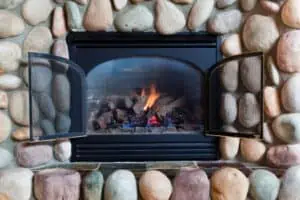How to Repair a Broken Fireplace Damper?
If you have a fireplace, it is important to keep the damper in good working order. It is a critical part of the chimney system and if it goes out, your house will be filled with smoke, cold air, and carbon monoxide.
(Looking for farmhouse fireplace repair? Contact us today!)

A chimney damper is a metal flap that closes off the flue of your fireplace when you are not using it and opens up when the fire is lit. It is usually located about a foot above the fireplace opening and can be operated by a lever that is easy to reach when you are looking down into the firebox.
Dampers are made from metal and can stick, rust, corrode or fall out of alignment over time. This can cause the damper to open too far or shut too little, which can create smoke problems and prevent the right amount of smoke from venting through your chimney.
There are two types of dampers that are commonly installed in chimneys. One type is called a throat damper and the other is a top-sealing damper.
Regardless of the type, you should have some basic tools when you are ready to fix your damper. You may want to have a small flashlight, a pair of gloves and some goggles, and some cleaning supplies like a brush and a cloth for removing soot.
First, locate your damper. It is generally a heavy metal door that sits between the firebox and the chimney. It may need a good scrubbing before you can use it again so be sure to wear some gloves and a mask while you work.
Next, remove the damper by unscrewing it from the rod that is fixed inside the chimney with four nuts. This is a very simple task and should only take a few minutes to complete.
It is a very good idea to have a friend or family member who can help you with this part of the job. They can also check for any rusted nuts or bolts that may be attached to the rod and the damper itself.
Then, using a screwdriver or wrench, remove the nuts and loosen the rod. You should then be able to twist off the old damper and put on the new one.
Now, it is a good idea to test the damper by pushing it open by hand. When the movable joints are exposed, spray them with a household lubricant.
If the damper still doesn’t open or close, it could be a problem with the rod or the plate that sits on the rod. These parts are normally made of stainless steel and can become rusty if not kept clean and free from dust and other debris.
You may need to replace your damper altogether if it is stuck, broken, or unable to be opened and closed. These issues can affect your home’s comfort and efficiency.
If the problem is severe enough, it is best to call a professional to come out and repair the problem. A chimney specialist can assess the damper and make sure it is in good working condition before recommending any necessary repairs.

